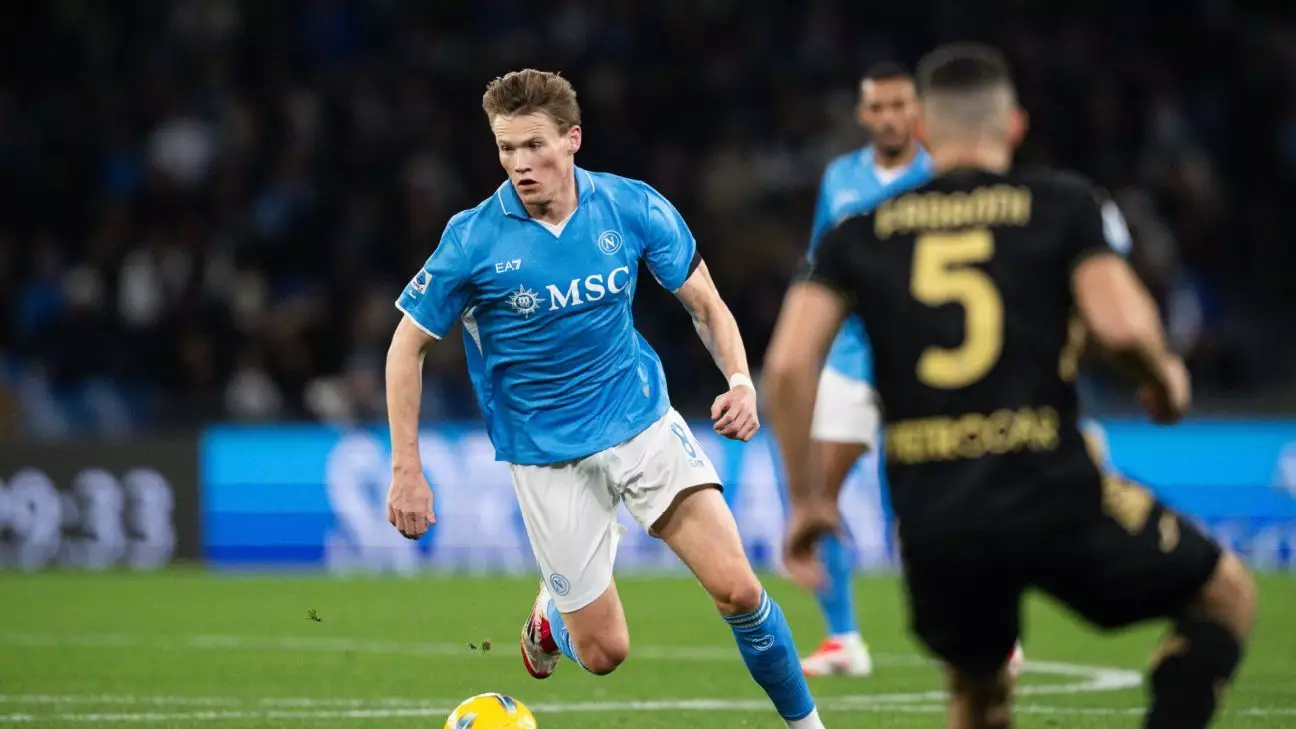Under the guidance of manager Antonio Conte, Napoli has shown a remarkable transformation this season, illustrated by their recent 2-0 victory against Hellas Verona. This win allowed Napoli to maintain its position at the top of the Serie A standings, extending their lead over rivals Inter Milan. It is not solely the scoreline that captures attention; the real story lies in the tactical evolution that Conte is implementing, along with the impact of new signings such as Scott McTominay and Romelu Lukaku.
The match against Verona highlighted the team’s adaptive game strategy. Napoli’s breakthrough came through resilience, as Giovanni Di Lorenzo’s shot striking the post was a testimony to their attacking intent. The rebound led to Frank Anguissa’s decisive long-range goal, showcasing the players’ readiness to capitalize on unexpected opportunities. Winning five league matches in a row is no small feat in a competitive landscape, indicating both skill and strategy. However, Conte himself acknowledges that his tactical blueprint is still a work in progress.
The integration of McTominay and Lukaku into the squad has been particularly noteworthy. McTominay transitioned from Manchester United while Lukaku’s recent roles have involved spells at both Chelsea and Italy’s Roma, culminating in his arrival at Napoli. Conte emphasized that their presence has been pivotal in shifting to a 4-3-3 formation, a move that reflects a concerted effort to optimize player strengths while enhancing team cohesion. It reveals Conte’s tactical flexibility and highlights his willingness to evolve based on player capabilities, which is critical in such a high-stakes environment.
Furthermore, Conte’s assertion that “more confidence” permeates the squad points to a deeper sense of unity and mutual understanding. New elements often bring unpredictability, yet they have seemingly blended seamlessly into the existing squad dynamics, fostering a collective ambition.
Despite the evident success on the pitch, Conte’s candid remarks regarding Khvicha Kvaratskhelia reveal the weight of leadership. Kvaratskhelia has expressed desires to leave, reportedly attracting interest from powerhouses like Liverpool and Paris Saint-Germain. Conte’s reflection on his inability to retain a pivotal player illuminates a critical aspect of his role—not just as a strategist on match day, but as a figure who must navigate the complexities of player management and club dynamics.
His feelings of disappointment underscore a broader truth about coaching: it involves a delicate balance between achieving results and fostering a culture where players feel valued and invested in the team’s vision. By acknowledging his shortcomings, Conte demonstrates a level of humility and self-awareness that can be refreshing in the often ego-driven realm of professional sports.
As Napoli continues to ascend the Serie A ladder, the strategic adjustments under Conte, combined with the impact of new player acquisitions, lay a promising foundation for the rest of the season. The contrasting emotions surrounding individual player decisions and collective team victories illustrate the multifaceted nature of football management. As the season progresses, Conte’s challenge will be to maintain this delicate equilibrium while continuing to refine his tactics and build an environment where every player feels integral to Napoli’s aspirations.

